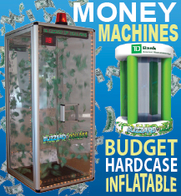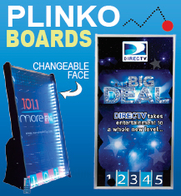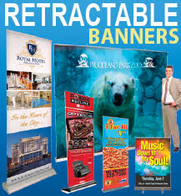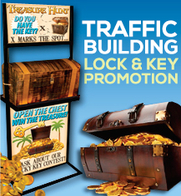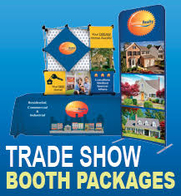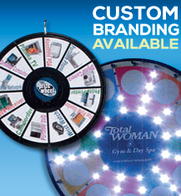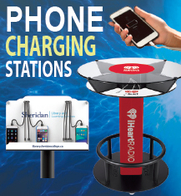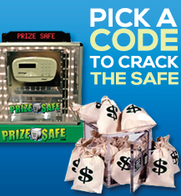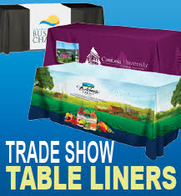 The lighting that you use throughout your trade show exhibit can be deployed with varying effects. It can create moods, encourage attendees to visit, or catch the eyes of passersby. A well-placed back-light can illuminate your main product, drawing the attention of visitors.
The lighting that you use throughout your trade show exhibit can be deployed with varying effects. It can create moods, encourage attendees to visit, or catch the eyes of passersby. A well-placed back-light can illuminate your main product, drawing the attention of visitors.
Creatively placed flexible arms, telescoping arms, and wall-mounted halogens and sconces can subtly evoke responses from your visitors. Most trade show vendors don’t fully appreciate how the right type of lighting can be used in their booths to help control the environment.
Below, I’ll provide a few trade show ideas for using booth lighting in order to draw people in, encourage their openness, and set the stage for collecting leads and sales.
Selecting The Pivot Point
Nearly every trade show booth has a focal point. Sometimes, a new product needs to be in the spotlight, drawing the eyes of each visitor. Other times, you might want attendees to focus upon a video screen that extols the virtues of your products.
Before erecting your exhibit, identify its pivot point. Then, decide upon which type of lighting would best fulfill your objective. For example, if you’re highlighting a product, would 2 high-intensity telescoping arms be suitable? Or, would a warm, LED rope light that is supported by a backlight box be more appropriate? Your booth lighting decisions will be largely based upon the trade show ideas that you’ve used in designing your exhibit.
Increasing The Impact Of Your Booth Lighting
If you’re unfamiliar with booth lighting, you may not realize the level of flexibility you have. You can use different colors, lights with varying intensities, and even special effects. In fact, were you to visit the booths of many of the larger trade show exhibitors, you’d likely see many of these options being deployed in order to attract attendees’ attention. For example, other vendors might cast spotlights or floodlights across their banners. Or, they might use a multi-colored rotational lighting system to create a dynamic, constantly changing atmosphere.
These options can deliver enormous impact to your exhibit, especially if other trade show vendors near your booth aren’t using them. Also, keep in mind that using creative lighting doesn’t need to be expensive. In fact, you can accomplish a lot by mixing a variety of cost-effective wall-mounted, extending arm, and telescoping solutions.
Think “Functional”
Flashy lighting systems and special effects have their place; they can support an existing brand, deliver an attractive visual presentation, and encourage product sales. However, when used improperly, they can actually impede your sales and lead-generation efforts. For example, a dazzling exhibit light show might grab attendees’ attention and draw spectacular crowds to your booth. But, if your visitors are mesmerized by the light show, your booth staff may not be able to engage them in conversation, thereby limiting their ability to collect leads.
Like all effective event marketing andtrade show ideas, it’s important to choose a lighting solution that is both attention grabbing and functional. One without the other limits its usefulness and potential.
Booth Lighting Trade Show Ideas
If you’re on a limited budget, it’s even more crucial that you leverage cost-effective trade show ideas in order to increase the impact of your booth lighting. That may mean sacrificing a dazzling light show to conserve cash flow, investing the funds in longer-lasting trade show giveaways instead. The important thing to remember is that the lighting solutions you design for your exhibit can have a dramatic effect on your success. Booth lights can create product awareness, direct visitor attention, support lead-generation efforts, and increase sales. Like many high-impact trade show ideas, creativity can be more effective than an unlimited budget.
About the author:
Jonathan Edelman provides helpful advice about trade show strategies. With years of experience in the trenches, he is an expert on booth displays, follow up techniques, and using trade show marketing strategies to boost revenue.








